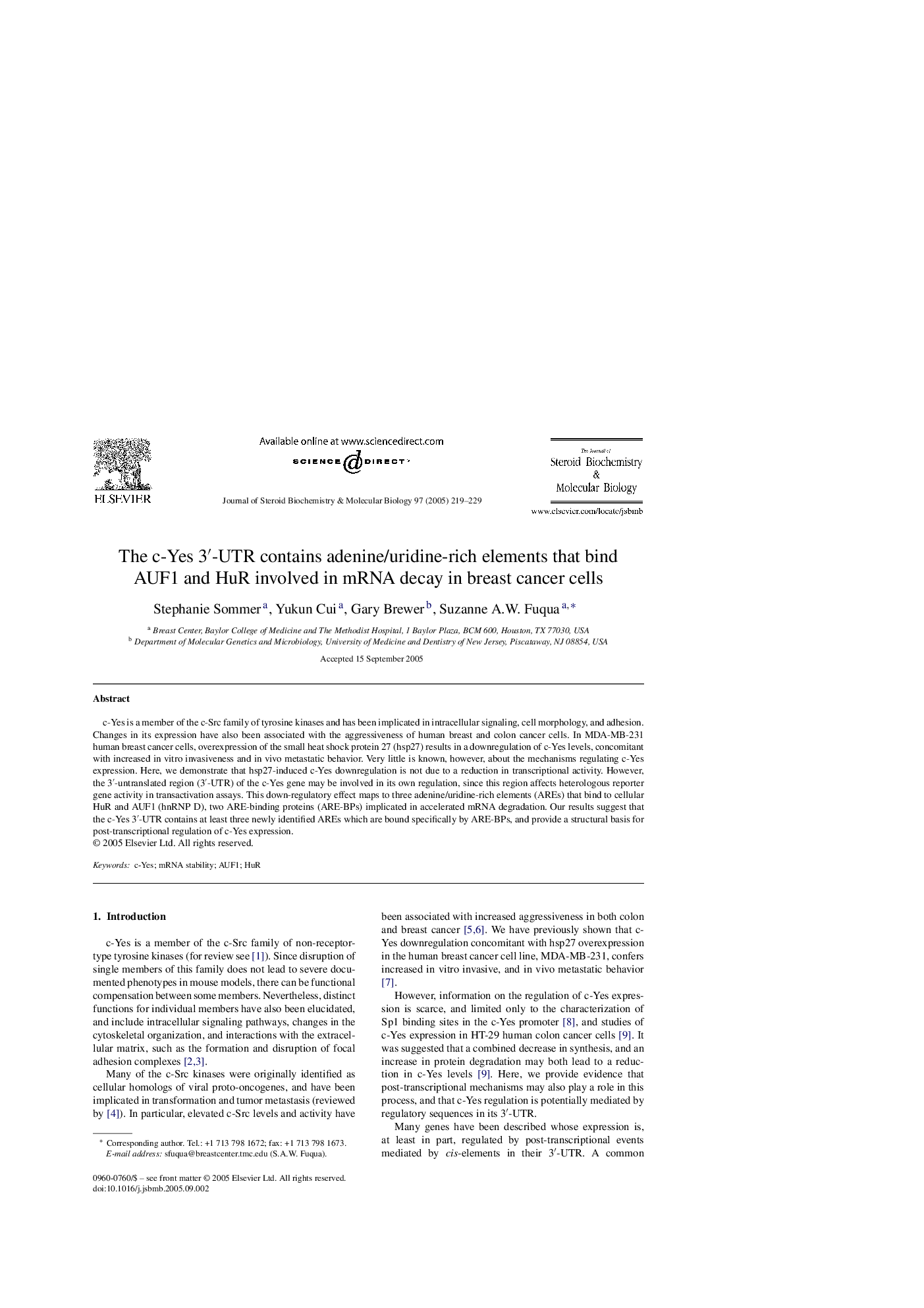| Article ID | Journal | Published Year | Pages | File Type |
|---|---|---|---|---|
| 9892029 | The Journal of Steroid Biochemistry and Molecular Biology | 2005 | 11 Pages |
Abstract
c-Yes is a member of the c-Src family of tyrosine kinases and has been implicated in intracellular signaling, cell morphology, and adhesion. Changes in its expression have also been associated with the aggressiveness of human breast and colon cancer cells. In MDA-MB-231 human breast cancer cells, overexpression of the small heat shock protein 27 (hsp27) results in a downregulation of c-Yes levels, concomitant with increased in vitro invasiveness and in vivo metastatic behavior. Very little is known, however, about the mechanisms regulating c-Yes expression. Here, we demonstrate that hsp27-induced c-Yes downregulation is not due to a reduction in transcriptional activity. However, the 3â²-untranslated region (3â²-UTR) of the c-Yes gene may be involved in its own regulation, since this region affects heterologous reporter gene activity in transactivation assays. This down-regulatory effect maps to three adenine/uridine-rich elements (AREs) that bind to cellular HuR and AUF1 (hnRNP D), two ARE-binding proteins (ARE-BPs) implicated in accelerated mRNA degradation. Our results suggest that the c-Yes 3â²-UTR contains at least three newly identified AREs which are bound specifically by ARE-BPs, and provide a structural basis for post-transcriptional regulation of c-Yes expression.
Keywords
Related Topics
Life Sciences
Biochemistry, Genetics and Molecular Biology
Biochemistry
Authors
Stephanie Sommer, Yukun Cui, Gary Brewer, Suzanne A.W. Fuqua,
